Enter the Dragon
- August 2, 2023
- By Air Cdre (R) Muhammad Ali, SI(M)
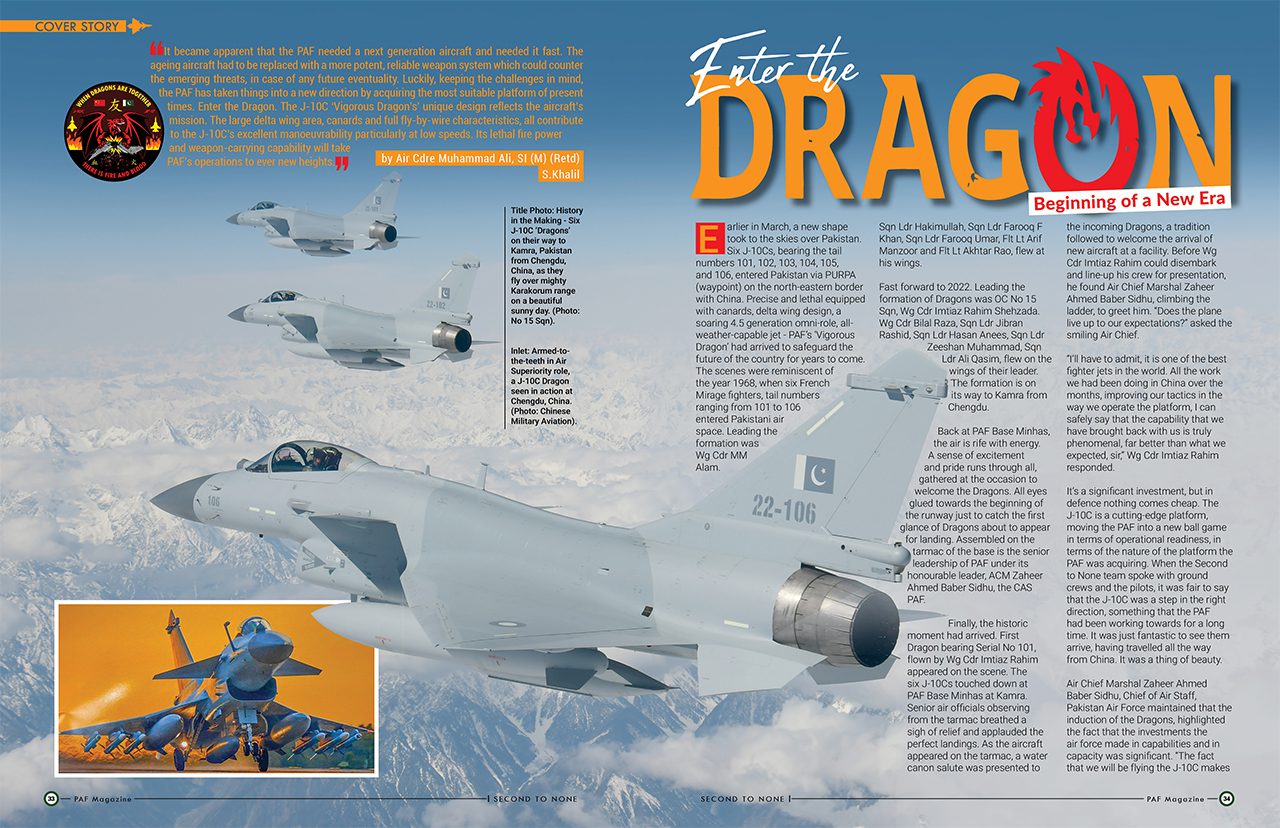
Beginning of a New Era
It became apparent that the PAF needed a next generation aircraft and needed it fast. The ageing aircraft had to be replaced with a more potent, reliable weapon system which could counter the emerging threats, in case of any future eventuality. Luckily, keeping the challenges in mind, the PAF has taken things into a new direction by acquiring the most suitable platform of present times. Enter the Dragon. The J-10C ‘Vigorous Dragon’s’ unique design reflects the aircraft’s mission. The large delta wing area, canards and full fly-by-wire characteristics, all contribute to the J-10C’s excellent manoeuvrability particularly at low speeds. Its lethal fire power and weapon-carrying capability will take PAF’s operations to ever new heights.Earlier in March, a new shape took to the skies over Pakistan. Six J-10Cs, bearing the tail numbers 101, 102, 103, 104, 105, and 106, entered Pakistan via PURPA (waypoint) on the north-eastern border with China. Precise and lethal equipped with canards, delta wing design, a soaring 4.5 generation omni-role, all-weather-capable jet – PAF’s ‘Vigorous Dragon’ had arrived to safeguard the future of the country for years to come. The scenes were reminiscent of the year 1968, when six French Mirage fighters, tail numbers ranging from 101 to 106 entered Pakistani air space. Leading the formation was Wg Cdr MM Alam.
Sqn Ldr Hakimullah, Sqn Ldr Farooq F Khan, Sqn Ldr Farooq Umar, Flt Lt Arif Manzoor and Flt Lt Akhtar Rao, flew at his wings.
Fast forward to 2022. Leading the formation of Dragons was OC No 15 Sqn, Wg Cdr Imtiaz Rahim Shehzada. Wg Cdr Bilal Raza, Sqn Ldr Jibran Rashid, Sqn Ldr Hasan Anees, Sqn Ldr Zeeshan Muhammad, Sqn Ldr Ali Qasim, flew on the wings of their leader. The formation is on its way to Kamra from Chengdu.
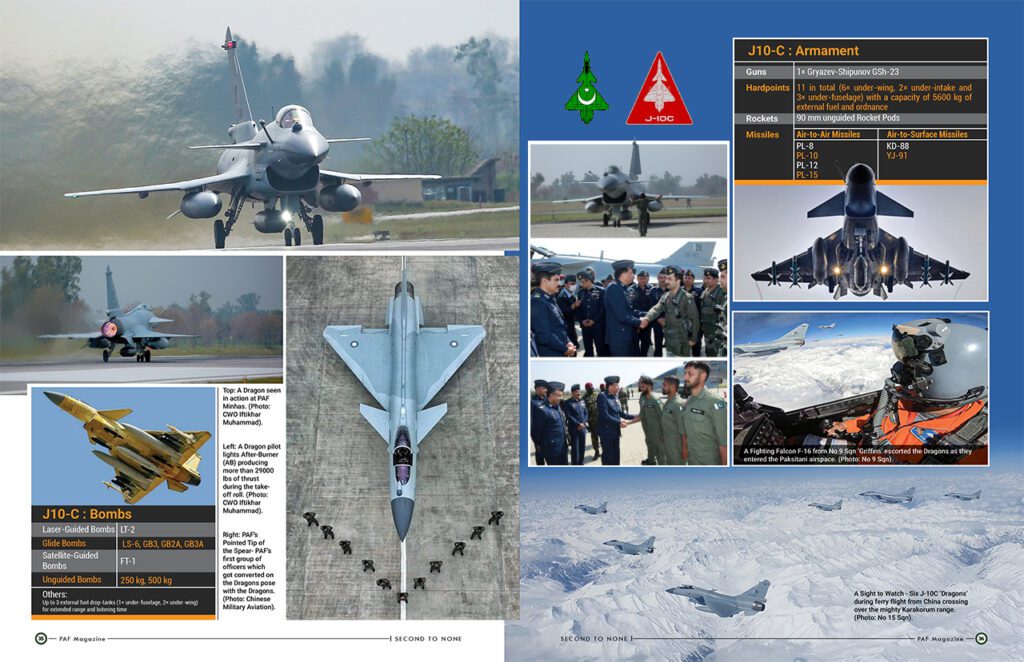
Back at PAF Base Minhas, the air is rife with energy. A sense of excitement and pride runs through all, gathered at the occasion to welcome the Dragons. All eyes glued towards the beginning of the runway just to catch the first glance of Dragons about to appear for landing. Assembled on the tarmac of the base is the senior leadership of PAF under its honourable leader, ACM Zaheer Ahmed Baber Sidhu, the CAS PAF.
Finally, the historic moment had arrived. First Dragon bearing Serial No 101, flown by Wg Cdr Imtiaz Rahim appeared on the scene. The six J-10Cs touched down at PAF Base Minhas at Kamra. Senior air officials observing from the tarmac breathed a sigh of relief and applauded the perfect landings. As the aircraft appeared on the tarmac, a water canon salute was presented to the incoming Dragons, a tradition followed to welcome the arrival of new aircraft at a facility. Before Wg Cdr Imtiaz Rahim could disembark and line-up his crew for presentation, he found Air Chief Marshal Zaheer Ahmed Baber Sidhu, climbing the ladder, to greet him. “Does the plane live up to our expectations?” asked the smiling Air Chief.
“I’ll have to admit, it is one of the best fighter jets in the world. All the work we had been doing in China over the months, improving our tactics in the way we operate the platform, I can safely say that the capability that we have brought back with us is truly phenomenal, far better than what we expected, sir,” Wg Cdr Imtiaz Rahim responded.
It’s a significant investment, but in defence nothing comes cheap. The J-10C is a cutting-edge platform, moving the PAF into a new ball game in terms of operational readiness, in terms of the nature of the platform the PAF was acquiring. When the Second to None team spoke with ground crews and the pilots, it was fair to say that the J-10C was a step in the right direction, something that the PAF had been working towards for a long time. It was just fantastic to see them arrive, having travelled all the way from China. It was a thing of beauty.
Air Chief Marshal Zaheer Ahmed Baber Sidhu, Chief of Air Staff, Pakistan Air Force maintained that the induction of the Dragons, highlighted the fact that the investments the air force made in capabilities and in capacity was significant. “The fact that we will be flying the J-10C makes a statement that PAF, has significant defence capability and is willing to do its part in the world, and is willing to meet its obligations,” the Air Chief said during the arrival ceremony of the jets at PAF Base Minhas, where the enthusiasm was contagious.
Taming the Dragon
To get trained on J-10Cs and later ferry the Dragons from China, a team of professionals including both pilots and ground crew, were short-listed. Wg Cdr Imtiaz Rahim Shahzada, who has flown F-16s and Mirages was given the honour of leading the contingent to China in October 2021. His team boasted skilled F-16, JF-17 and Mirage pilots, familiar with Beyond Visual Range (BVR) and had AI exposure.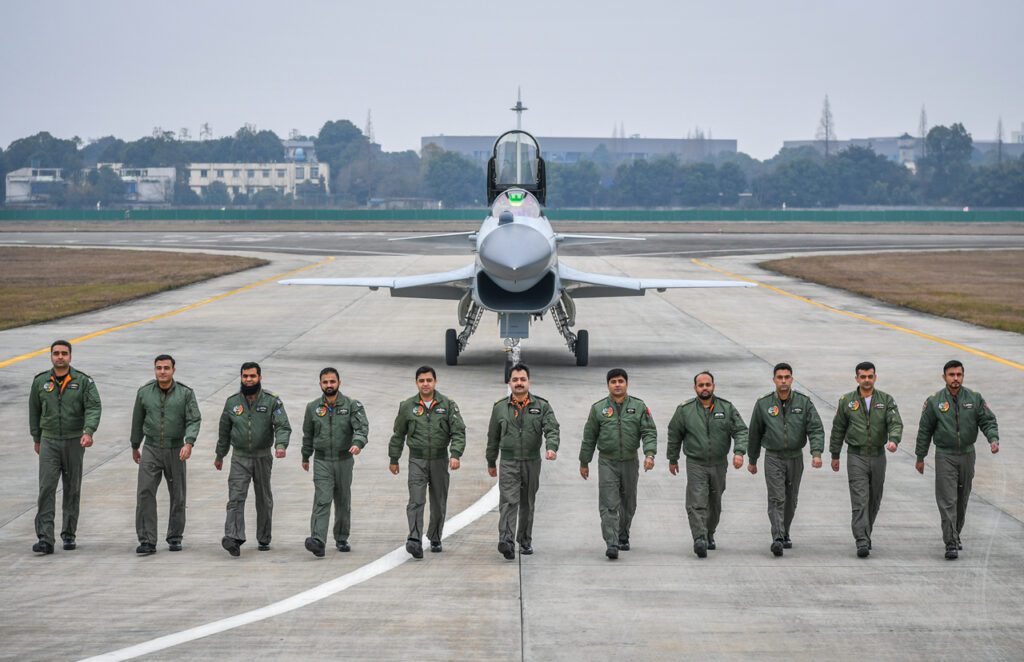
Following strict covid protocols, the team travelled in three groups over a span of three weeks. Gp Capt Azkaar from Project Dragon handled logistics, overseeing departure formalities, flight cancellations due to covid, preparing backups for dropouts. Upon landing in China, on 20 October, the crews were quarantined in the city of arrival for 14 days. On the second last day of the quarantine, Wg Cdr Imtiaz Rahim, tested positive. The rest were cleared to depart to Chengdu, where they were quarantined for another two weeks. Wg Cdr Imtiaz Rahim spent, in all, 72 days in quarantine before he could join his teammates who had already started their training.
Training was focused specifically on operating the J-10C. “In Chengdu, we were basically starting to learn how to fly this technologically advanced jet, and then we went through all the different mission sets and basic skills,” Wg Cdr Imtiaz Rahim said. Most of the pilot’s instructions came on the ground, in the classrooms followed by pilots practicing the aircraft’s most unique capabilities in an advance simulator. Language was a major barrier, which the PAF crew overcame with the help of an interpreter.
After classes, PAF pilots used to sit down to reconcile information on their own. No time to enjoy and see China. They were trained directly by the original equipment manufacturers (OEM), and by Chinese counterparts with perhaps a few more flying hours under their belts. Few days of theoretical sessions were followed by quizzes. During training it was crucial that pilots got comfortable executing J-10C’s maneuvers. Hence, simulator training started in detail, learning avionics, switchology, feel of controls was extremely realistic, engine handling, response of controls – allowing to recreate emergencies and procedures in the aircraft that really simulate what it would be like to fly in a real J-10C.
Each PAF pilot had to complete prescribed number of sorties in the simulator as minimum syllabus requirement, only then they could be allowed in the new jet. Anything they could do in an aircraft they could in the simulator – max rate turns, vertical climbs weapon employment techniques etc.
“A lot of people underestimate the amount of work it takes to become a pilot, and a fighter pilot specifically. A one-hour flight, even in a simulator might mean up to several additional hours of briefing, gearing up, flight inspections, and debriefings, not to mention the hours spent studying/preparing for each mission,” said Wg Cdr Bilal Raza emphasizing on the importance of training.
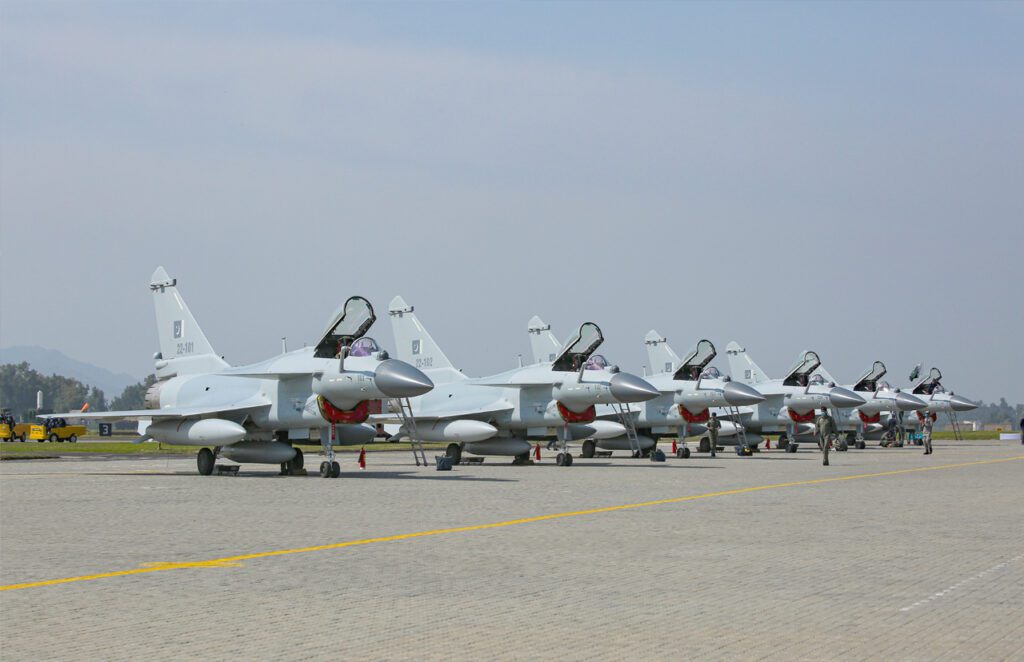
Finally, the day arrived when the crew had the opportunity to have the first look at the aircraft. The PAF crew were in awe of the jet when they first set their eyes on the Dragon. First thing they noticed was its huge size, the slightly different shape and Its looks as compared to weapon systems they had already flown. “It was a fantastic feeling and we were in love with the bird on first sight,” Wg Cdr Bilal Raza said.
“It’s one of the world’s most advanced fighter aircraft and we’re lucky to be a part of that programme in the PAF, and to be at the leading edge of that is real privilege and real delight,” Wg Cdr Bilal Raza added, enthusiastic to feel how it would handle in the air, and wanting to experience its agility and manoeuvrability.
At Chengdu, it was the job of Chinese instructors to teach PAF pilots how to fly the J-10C from scratch. The Chinese were nervous, at first, fearing the guest crew would not be able to hack it. “This wasn’t like college where we could get through with minimum passing grades. We had to attain almost 100% to qualify in each and every phase, there were no let ups. We were expected to catch on to material we were taught really quickly, the learning curve had definitely been pretty steep,” Wg Cdr Imtiaz Rahim recalled. The instructors worked over time, gave up a week of Chinese New Year holidays to train PAF pilots – no compromises to achieve minimum standards.
The First Mission
After all the tedious ground work – learning about aerodynamics, aircraft systems, navigation and instrument flying, it was time to get a feel of the jet. PAF crews spent two days climbing into the cockpit, strapping up and developing equipment familiarization. Each pilot performed ground starts, after start procedures, followed by shut down, slow/medium taxi came later. some of the pilots progressed while the remaining continued on the simulator.“Finally, we had all the gear on, and after months of preparation, it was time to go flying. Of course, a thorough briefing before flight, and supervisor checks were performed so that everything was in order in order before getting airborne.” Wg Cdr Imtiaz Rahim said.
Since the PAF airmen had not flown for a long period and they needed to regain their flying currency. They jumped into K-8s to get used to the Gs, get currency and understand wind patterns and operating areas. Before stepping foot in the J-10C cockpit, student pilots needed to familiarize themselves with the gear needed to operate the J-10C, in their custom-made G suits to fit perfectly. Last but not the least, the pilots learnt to utilize the most technologically advanced piece of equipment, their helmets. The pilot’s Heads-Up Display was directly projected on the visor rather than just at the front of the cockpit. This allowed pilots to easily view key data such as altitude, air speed and direction and even select multiple targets and shoot. “Since the jet helps us so much, flying becomes second nature. That way we can focus on all the information that the plane is giving us,” Wg Cdr Imtiaz Rahim elaborated.
“It’s amazing to be in a 4.5 generation semi-stealth fighter, kind of tip of the spear. It’s a heavily weighted aircraft, in terms of combat power, that the PAF brings to the fight,” Sqn Ldr Jibran Rashid said.
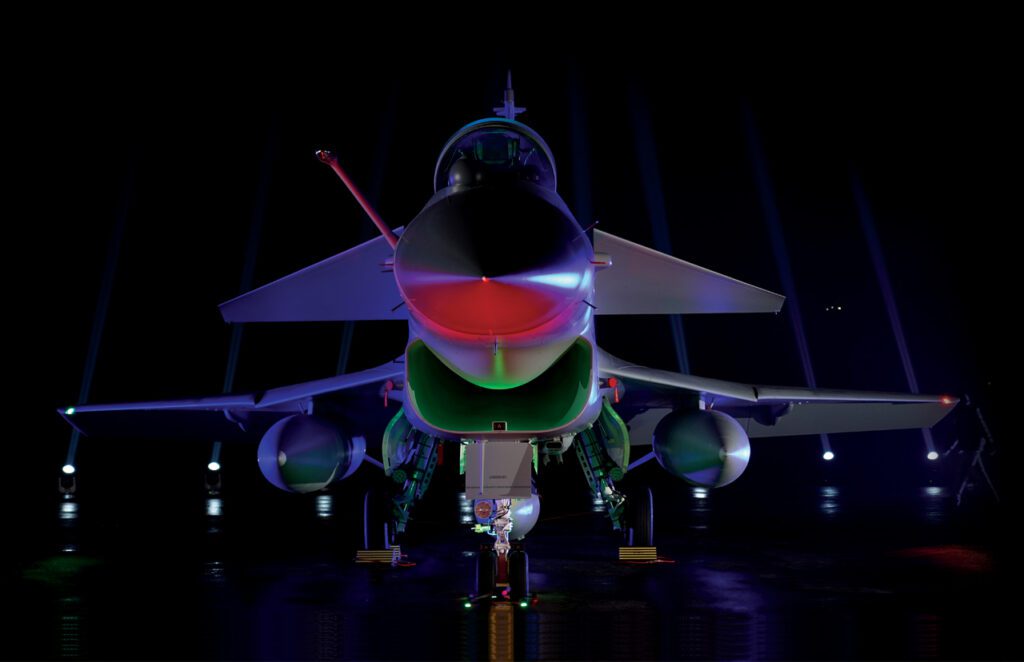
One part of history was achieved when Wg Cdr Imtiaz Rahim flew the first solo sortie of the Dragon. “A lot of the challenge was trying to absorb all the information the jet is giving you, operate all the sensors and the systems at the same time and fly, the feeling was enormous,” the team leader said. All the PAF pilots enjoyed basic handling, confidence building manoeuvres in advanced handling missions, in clean and tanked configuration both. This was followed by training of air combat tactics and instructor training for some of the PAF aircrew.
The crews were taken aback after engaging afterburner (AB).
The kick was bigger than the F-16. “There was an unbelievable amount of thrust when I opened up the after burner for the first time. The J-10C can produce 29, 000 lb thrust, which is 10,000 lbs excess thrust than the JF-17 produces and as much power as two and a half Mirages put together. A single Mirage produces 14, 000lb thrust,” Sqn Ldr Jibran Rashid said. The speed increment was so fast that post take-off procedures had to be executed in rapid succession to remain with the aircraft.
Once in the air, handling the jet was not the most difficult aspect, Wg Cdr Bilal Raza said adding, “It is actually a really easy plane to fly, the aircraft comes with Voice Recognition Capability which makes your life much easy.”
Nonetheless, the pilots flew at 26, 000 ft, did general steep turns, building up Gs gradually, performing straight in approach, accessed information through voice commands such as requesting fuel state, hands on throttle and stick (HOTAS) on most actions, instrument approach, close pattern, low go, and deploying drag shoot and making a full stop landing comfortably within 3, 500 to 4, 000 ft on a 7,500 ft runway.
“It was historic and emotional for Pakistanis and Chinese both when we landed safely for the first time. We were presented with bouquets,” Wg Cdr Bilal Raza said.
Dragons Ferry
After six months of trials and tribulations, it was time to ferry the first batch of six J-10C Dragons, back home. From here on, life would never be the same. The crew set down to plan the ferry mission in minutest details. They needed answers to all the questions, what selecting diversionary airfields, protocols in case of emergency, what is the enroute weather like etc. Crossing over the Karakorum range was no easy job, it needed perfect and flawless planning which the crew did. Finally, came the ferry day. The aircraft were topped up with required fuel and three external tanks each were fitted to the ferry aircraft. Six Dragons under Wg Cdr Imtiaz Rahim started up and headed for the take-off point. After Burners on, six aircraft started to roll on the Chengdu runway, off to motherland. Getting airborne, the leader looked around to see if the rest of his section were with him. Climbed up to cruise height followed the planned route. “It was a proud day, proud moment for all of us. We knew that we were making history, the feeling was nostalgic.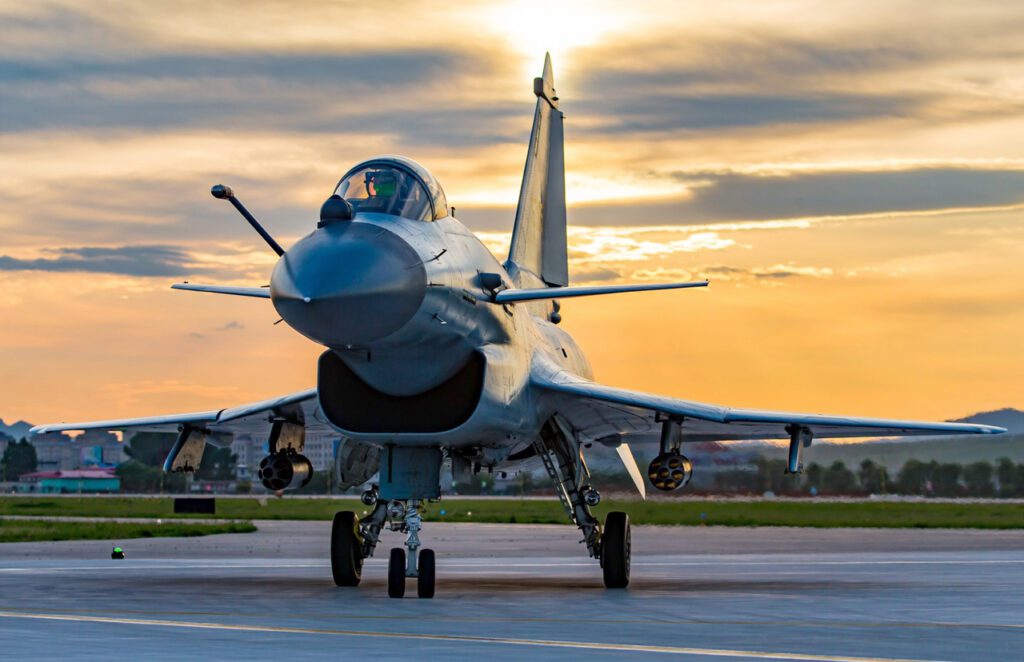
The ferry was eventless, the weather was good. As we entered the Karakorums we were amazed to see the beauty of the landscape. We flew abreast the K-2, towering 28000 feet plus the second highest peak of the world. As soon as the six J-10C jets entered Pakistani air space, an escort F-16 from No 9 Sqn ‘Griffins’, joined the formation of the Dragons. “Welcome back boys,” the pilot of the Fighting Falcon, call sign Griffin-1 said over the radio. Bit of a homecoming for the PAF. As soon as we established radio contact with Pakistani ATC radar we were greeted enthusiastically. “Dragon-1, welcome home,” replied the ground controller on radio.
The six new jets, tail numbered from 101 to 106, landed at PAF Base Minhas at Kamra, the material and logistical base of the new No 15 Sqn. The PAF crews had achieved a milestone that very few others could.
Tremendous investment had been made at Kamra, which has been a key base for many years. A fantastic new chapter in the country’s military capabilities and history. What it said in many ways is that after the induction of this state-of-the-art, modern and potent weapons system, the PAF is now operating in a much stronger and more efficient manner, thanks to these Dragons.
Author
Air Cdre (R) Muhammad Ali, SI(M)
Enter the Dragon – Second To None
 secondtonone.com.pk
secondtonone.com.pk

































